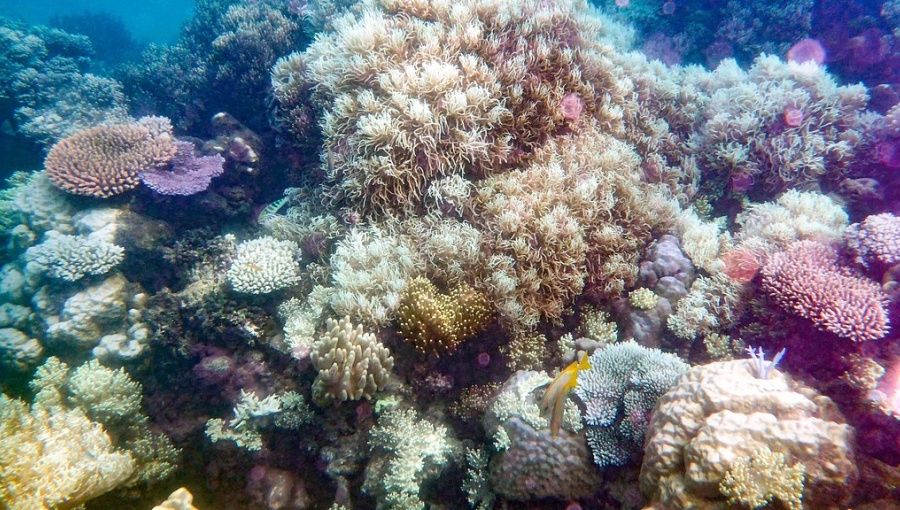Four-century record heat is “existential threat” to Great Barrier Reef

Over the past nine years, the Great Barrier Reef has experienced five significant coral bleaching events. A recent study examining centuries-old coral samples highlights the severe threat climate change poses to this natural wonder. Australian researchers have found that over the past decade temperatures in and around the reef have reached their highest levels in 400 years.
Extreme heat, largely driven by climate change, has already led to five mass bleaching incidents within the last nine years.
According to the scientists who published their findings in the peer-reviewed journal Nature, these rising temperatures now represent an “existential threat” to the reef. “The science tells us that the Great Barrier Reef is in danger – and we should be guided by the science,” Prof Helen McGregor from the University of Wollongong in Australia told BBC News.
The study's new evidence comes directly from within the coral. Over the years, marine scientists have drilled cores from coral skeletons, uncovering chemical clues that reveal how the reef's environment has evolved over time. Corals, even though they are animals, can live for centuries, recording environmental changes in their structure.
By revisiting data from thousands of these coral cores and comparing them with historical sea temperature records from the UK's Hadley Centre, researchers confirmed that the last decade has seen the warmest temperatures around the Great Barrier Reef in 400 years.
"The recent events in the Great Barrier Reef are extraordinary," said Dr. Benjamin Henley, the lead researcher of the study conducted at Wollongong University. "Unfortunately, this is terrible news for the reef."
However, he added, "If we can come together and restrict global warming, there's a glimmer of hope for this reef and others around the world."
Corals thrive within a specific temperature range, building a skeleton that provides a habitat for marine life. They exist in a symbiotic relationship with algae, which live inside them, offering food and vibrant colour.
Bleaching occurs when ocean temperatures rise too much, causing corals to expel the algae, leaving them white. "It’s not a pretty sight," noted Dr. Henley. If the heat persists, bleached coral may not recover, eventually being overtaken by brown algae.
While acknowledging the severity of the situation, Professor McGregor hesitated to declare the reef doomed, saying: "Reefs have survived a lot of change over geological time. The question is, what kind of reef will we end up with? It won't be like what we have now."
Currently, the Great Barrier Reef holds the status of a UNESCO World Heritage site, but the findings from this research may push the organisation to consider labelling it as “endangered”. McGregor remarked that such a designation “would send a huge signal to the world about how grave the problem is.”
She concluded, “We know what we need to do. We have international agreements in place [to limit the rise in global temperature]. I think we just need to put the politics aside and get on with it."
Coral reefs can bounce back from being bleached, but as the New York Times stated on August 11, “Even if humanity moves swiftly to rein in global warming, 70-90% of today’s reef-building corals could die in the coming decades. If we don’t, the toll could be 99% or more. A reef can look healthy right up until its corals start bleaching and dying. Eventually, it is a graveyard.”
What could be left will be pockets of hardier corals. “But the vibrant ecosystems these creatures support will be unrecognisable. There is no bouncing back anytime soon, not in the places corals live today, not at any scale,” said the newspaper.


Follow us online